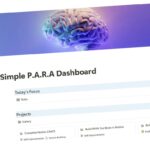
This is Day 13 of my 30-day writing challenge. Today’s task is to Structure a process breakdown post—clear, step-by-step guidance.
For years I had been taking notes, thinking I was building a knowledge base.
I wasn’t.
All I did was collect notes. The notes ended up buried in a digital dump. I didn’t have a way to retrieve and use the information I had recorded.
The realization came when I was working on a project. I struggled to find related notes even though I was sure that I wrote something before. My knowledge base wasn’t useful. They were just piles of digital clutters.
That’s when I started learning how to build a personal knowledge base (PKB).
A personal knowledge base isn’t just a collection of notes. It’s a thinking tool that helps you connect ideas, generate insights and apply knowledge. The key to building a useful personal knowledge base is transforming raw notes into structured knowledge.
To turn raw notes into a valuable PKB, follow this three-step process:
- Capture
- Process
- Apply
Below are the detailed instructions and implementation steps for each process:
Capture: Collecting Fleeting Notes
- Goal: Capture ideas before they disappear.
- Common pitfall: Over-capturing without processing. This leads to clutters
How to do it right:
- Use a single inbox for note capture. Choose an app, Notion, Apple Notes, Obsidian or Capacities. Stick to one. Capturing all new ideas into one place makes it easy to process.
- Keep it short and clear. Record quick ideas, highlights from articles, or voice memo.
- Add a source or timestamp to make future review easier.
Example:
Bad: “Interesting ideas about learning from failures”
Good: “James Clear: Learning compounds like interest. Failure refines the process. Review what didn’t work”
Process: Structure & Organize Notes
- Goal: Convert raw notes into structured ideas
- Common pitfalls: Organizing for storage instead of future retrieval
How to do it right:
- Write Atomic notes Each note should capture one idea. Long-winded note with multiple ideas make retrieval harder.
- Summarize in your own words Avoid copy-pasting. Rewrite the notes in your own words to solidify understanding, and enhance your memory about the idea.
- Link notes to existing knowledge Connect your new notes to related notes. Creating a network of connected knowledge.
- Use a simple structure for organization For beginners, PARA (Project, Area, Resource, Archive) structure is a good choice. It is easy to setup. Create 4 folders or database view in your note-taking app. Move your processed notes into the following folders accordingly.
- Projects: Tasks that with a clear goal and deadline
- Areas: Areas of responsibility that require ongoing attention. (e.g. health, finances, learning)
- Resource: References that are useful for future projects
- Archive: Completed or inactive tasks or projects
Apply: Turn Notes into Actionable Insights
- Goal: Make knowledge work for you through content creation, decision-making, or problem-solving.
- Common pitfall: Collecting but never using knowledge
How to do it right:
- Regularly review and refine your notes. Set a weekly or monthly review session.
- Apply the 1-1-1 Rule. For each note, ask:
- One action I can take?
- One Connection to an existing idea?
- One way to share it (a blog post, social media post , or forum discussion)
Example:
- Write a blog post? – Search notes for related insights.
- Solving a problem? – Look for past lessons that apply.
- Creating content? – Use your PKB as a thinking partner.
Final Thoughts
A Personal Knowledge Base (PKB) isn’t just a note storage system. It’s a thinking tool. The key is to transform our notes into insights that we can use.
Now, it’s you turn.
Open your notes, clean them up, and start linking ideas. A well-structured PKB isn’t just storage. It’s a tool for thinking, learning, and creating. Make it work for you.



